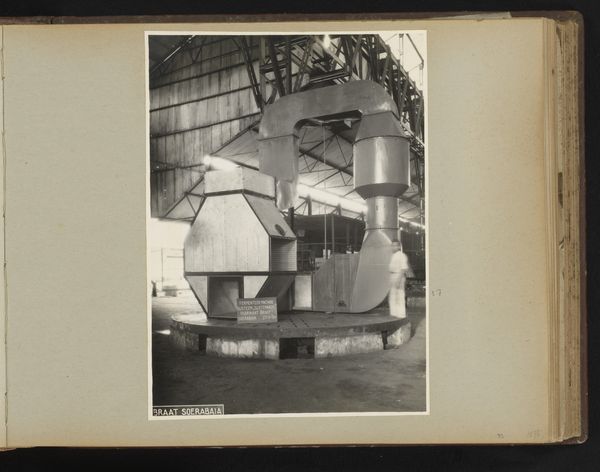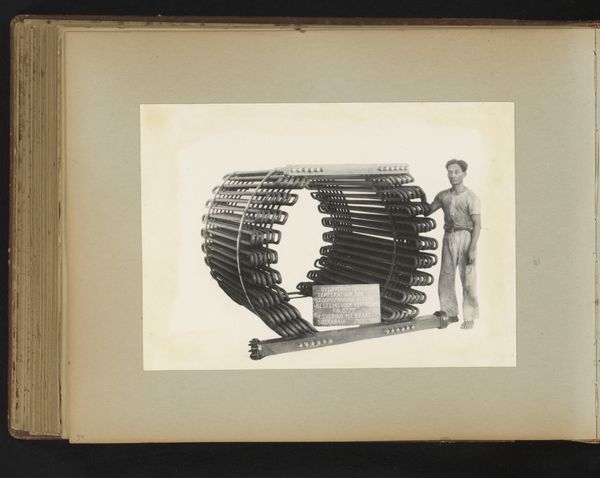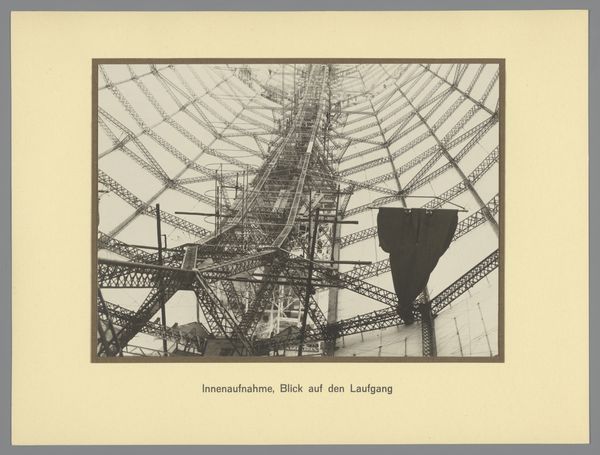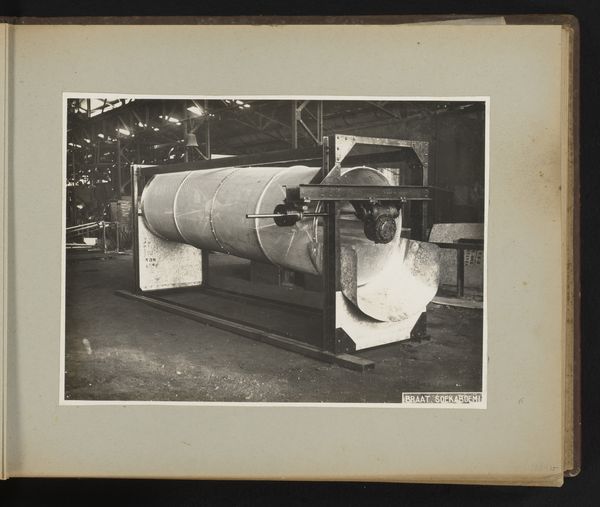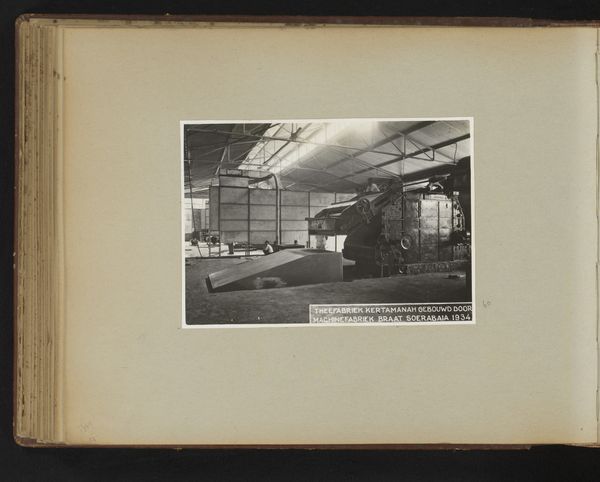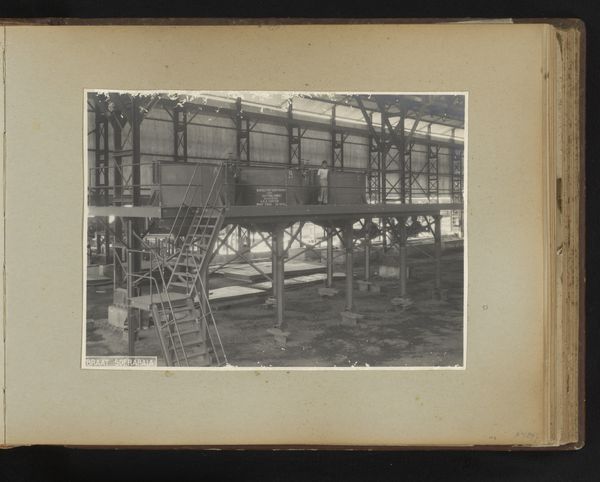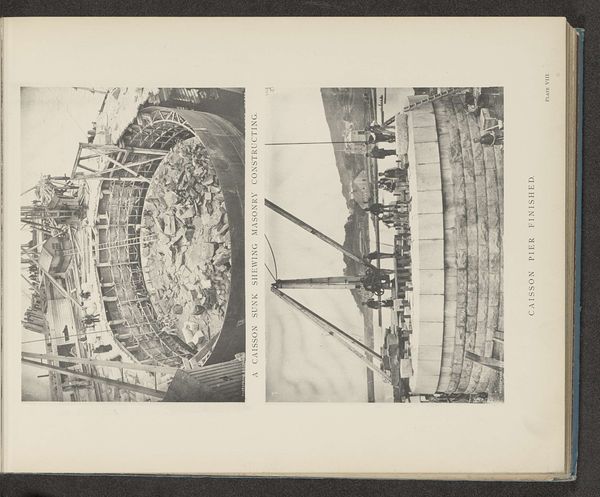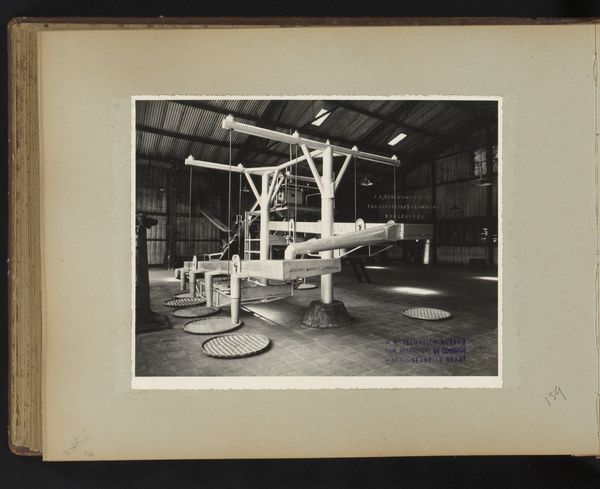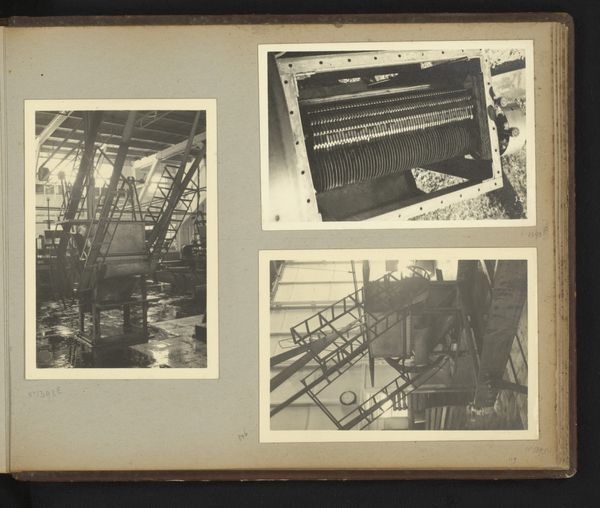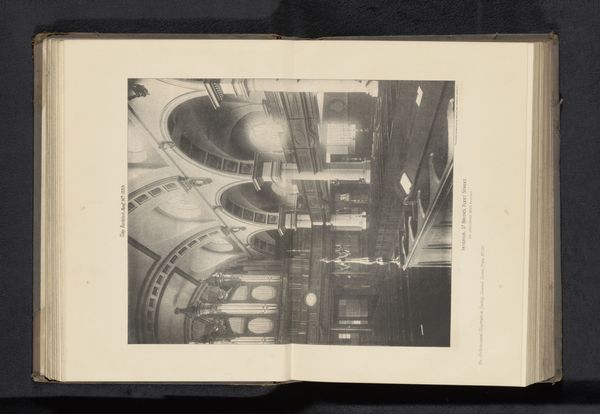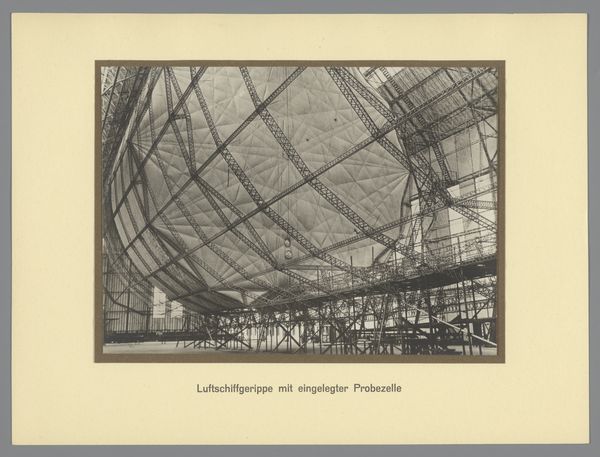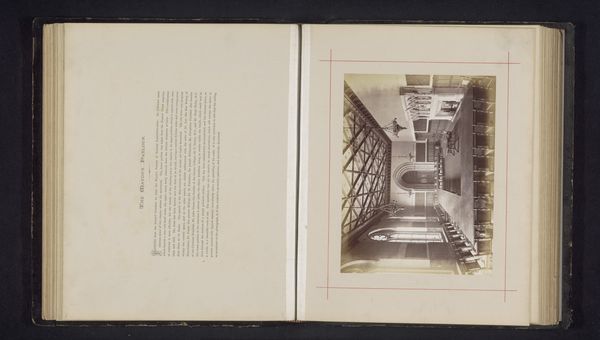
photography
#
landscape
#
photography
#
realism
Dimensions: height 171 mm, width 227 mm, height 250 mm, width 320 mm
Copyright: Rijks Museum: Open Domain
Curator: I’m struck by the sheer industrial poetry of this image, taken sometime between 1935 and 1936. Here we see a photograph of a "Steriliseerketel voor palmolie", which translates to a sterilisation vessel for palm oil, housed in the collections of the Rijksmuseum. What are your first thoughts? Editor: Claustrophobia mixed with awe. That gaping cylindrical mouth looms so large, and yet the man standing inside seems so utterly dwarfed by it all. The monochrome adds a sense of timeless, almost sci-fi dread. Curator: It is captivating, isn’t it? Think about the labour, the raw materials mined and forged, transported across vast distances, the engineering involved in creating something on this scale for processing palm oil. The photograph itself becomes a document of production. Editor: And speaking of labor, consider the human element, like the man placed squarely in the cylinder; he acts as an unlikely protagonist who almost melts in the scene. Was this for scale, for show or just some bored machinist wanting their moment in the spotlight? It reminds me of a stage—the whole factory, really— with human lives orbiting the equipment. Curator: Precisely! He contextualises the gargantuan apparatus within human scale. This intersects with Realism too; it isn’t merely documentation but conveys a certain social truth about labour and industrial advancement at the time, right? The anonymous photographer invites scrutiny not of individuals, but systems. Editor: Exactly. Thinking of the palms as natural architecture also allows us to envision an environmental theme, with this gargantuan kettle waiting at the other end. It’s interesting how a fairly simple documentary photograph like this can evoke the complex history of industry in that time. Curator: Yes, an incredible amount can be interpreted. I find it is precisely within those intersections – realism meeting with the scale, that photography intersects social truths. Editor: It leaves one oddly conflicted. Grateful for the innovations it represents and also very disturbed by it at the same time. Curator: Indeed. Its lasting power, for me, stems from its ability to invite critical engagement with both the beauty and potential cost of industrial innovation. Editor: For me, it’s the stark contrast between the vast, impersonal machine and that solitary human figure, forever caught in the act of dwarfing itself. Thanks for showing me this.
Comments
No comments
Be the first to comment and join the conversation on the ultimate creative platform.

